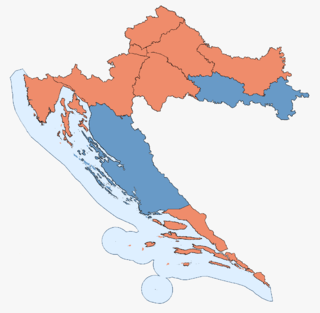Croatian parliamentary election, 2011
|
|
|||||||||||||||||||||||||||||||||||||||||||||||||||||||||||||||||||||||
|---|---|---|---|---|---|---|---|---|---|---|---|---|---|---|---|---|---|---|---|---|---|---|---|---|---|---|---|---|---|---|---|---|---|---|---|---|---|---|---|---|---|---|---|---|---|---|---|---|---|---|---|---|---|---|---|---|---|---|---|---|---|---|---|---|---|---|---|---|---|---|---|
|
|||||||||||||||||||||||||||||||||||||||||||||||||||||||||||||||||||||||
|
|
|||||||||||||||||||||||||||||||||||||||||||||||||||||||||||||||||||||||
|
All 151 seats to Hrvatski sabor 76 seats needed for a majority |
|||||||||||||||||||||||||||||||||||||||||||||||||||||||||||||||||||||||
| Turnout | 54.32% | ||||||||||||||||||||||||||||||||||||||||||||||||||||||||||||||||||||||
|
|||||||||||||||||||||||||||||||||||||||||||||||||||||||||||||||||||||||

Results of the election in each of the ten electoral districts of Croatia: the party with the plurality of votes in each electoral unit.
Kukuriku: orange; HDZ-HGS-DC: blue |
|||||||||||||||||||||||||||||||||||||||||||||||||||||||||||||||||||||||
|
|||||||||||||||||||||||||||||||||||||||||||||||||||||||||||||||||||||||
| 2003 election • MPs |
| 2007 election • MPs |
| 2011 election • MPs |
| Next election |
The 2011 Croatian parliamentary election was held on Sunday, 4 December 2011 to elect 151 members to the Croatian Parliament. This was the 7th parliamentary election in Croatia since independence.
Elections were held in 10 electoral districts inside Croatia (each providing 14 members of parliament), one electoral district for Croatian citizens living abroad (3 members of parliament), and one electoral district for national minorities (8 members of parliament). Candidate lists have to win more than 5% of the votes in an electoral district in order to be represented in Parliament.
The last election was a close race between the two major political alliances and resulted with Ivo Sanader winning a second term as Prime Minister. After his sudden and unexpected resignation in mid-2009, Jadranka Kosor succeeded him as head of the governing party (Croatian Democratic Union, HDZ) and formed a new Government. Zoran Milanović, despite losing a close race four years ago, was again chosen to be the Opposition's candidate for Prime Minister.
Domestic policy and the economy were the main themes of the campaign. The cabinet supported by the parliamentary majority, marked by numerous corruption scandals, high unemployment and a grim economic outlook, was highly unpopular and had been lagging in the polls since early 2009.
...
Wikipedia


